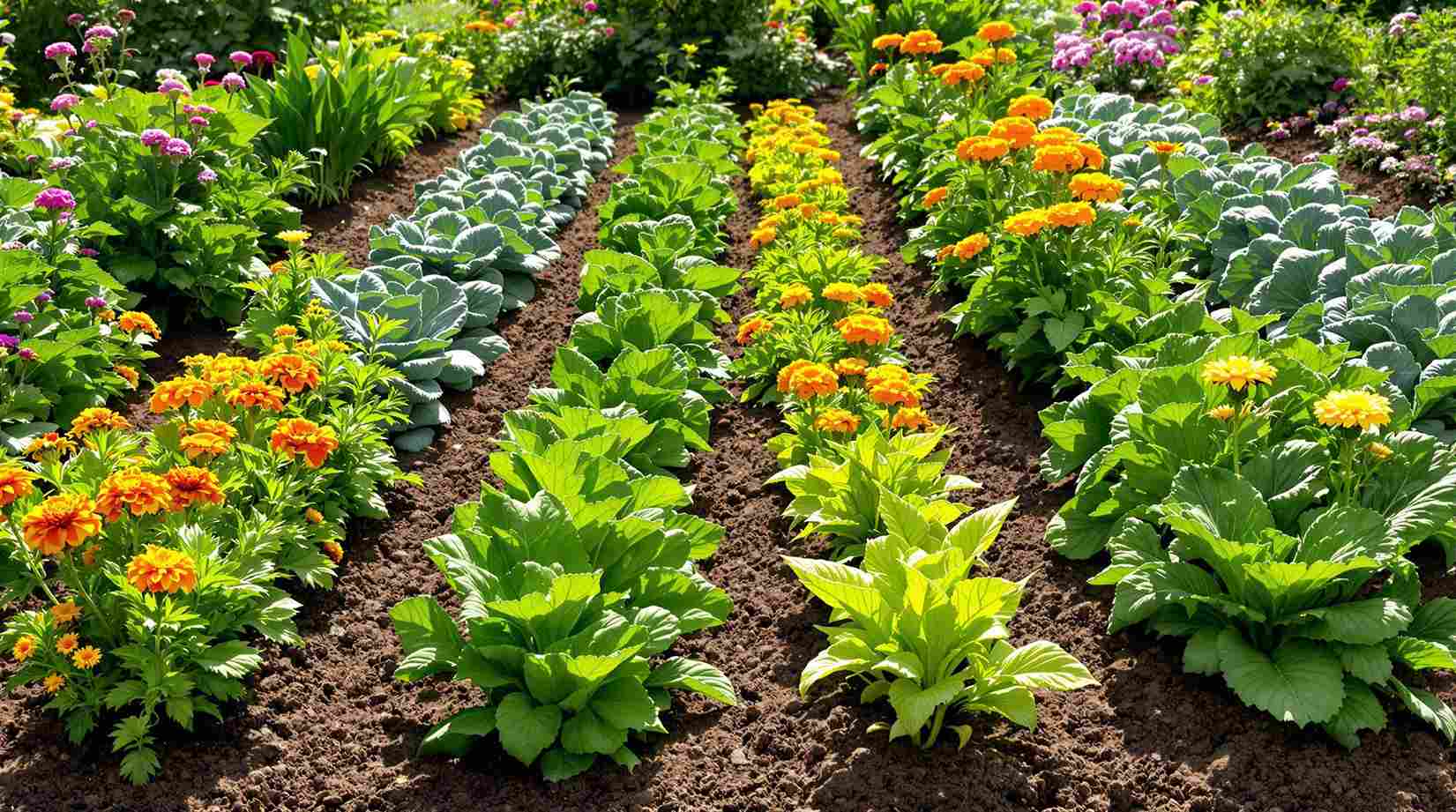The Complete Guide to Garden Companion Planting: Boost Your Garden Naturally
Companion planting—the strategic pairing of plants to enhance growth, deter pests, and improve flavor—represents one of gardening’s oldest and wisest traditions. This time-tested practice transforms your garden into a harmonious ecosystem where plants support each other naturally, reducing the need for chemical interventions while maximizing harvests. Whether you’re tending a modest container garden or managing extensive vegetable beds, understanding which plants grow best together can dramatically improve your gardening success. This comprehensive guide will walk you through the science and practice of companion planting, providing practical charts, expert insights, and proven combinations for vegetables and flowers alike.
Why Companion Planting Works: The Science Behind Plant Partnerships
Before diving into specific plant combinations, it’s important to understand the natural mechanisms that make companion planting so effective.
Biological Pest Control
Certain plants produce scents or chemicals that naturally repel harmful insects while attracting beneficial ones. For example, strong-smelling herbs like basil and marigolds with their bright colors deter pests that might otherwise damage your vegetables.
Soil Enhancement and Nutrient Cycling
Plants interact with soil in different ways:
- Nitrogen Fixers: Legumes like beans and peas host beneficial bacteria that convert atmospheric nitrogen into forms plants can use, enriching the soil.
- Dynamic Accumulators: Plants like comfrey and borage draw up nutrients from deep in the soil, making them available to shallow-rooted companions.
- Root Structure Diversity: Combining deep-rooted plants with shallow-rooted ones maximizes nutrient uptake throughout the soil profile.
Space Utilization and Physical Support
Smart companion planting makes efficient use of garden space:
- Vertical Gardening: Tall plants like corn can provide natural trellises for climbing plants like beans.
- Shade Management: Larger plants can provide cooling shade for heat-sensitive companions during summer months.
- Ground Cover: Low-growing plants can suppress weeds and retain soil moisture for taller neighbors.
Biodiversity Benefits
Gardens with diverse plantings experience:
- Reduced disease pressure and localized pest outbreaks
- Improved pollination through increased beneficial insect activity
- Greater resilience to environmental stresses like drought or unusual temperatures
Guide to Companion Planting Vegetables: Classic Combinations
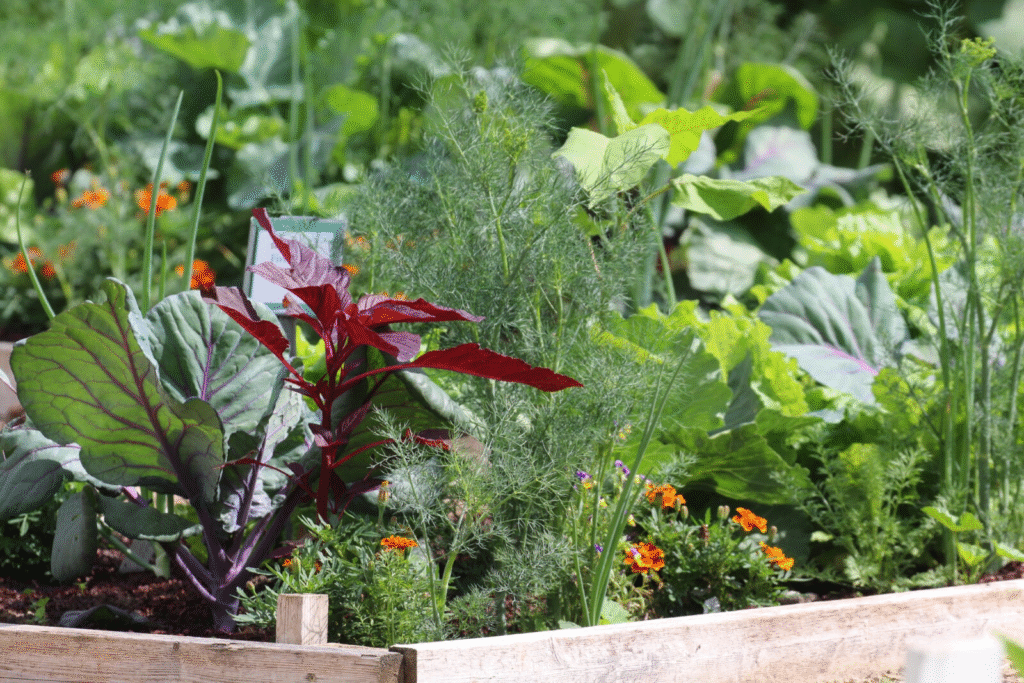
Some vegetable pairings have stood the test of time. Here are proven combinations that gardeners have relied on for generations:
The Three Sisters: Ancient Wisdom in Action
Native American farming traditions gave us perhaps the most famous companion planting method:
- Corn provides tall stalks for support
- Beans climb the corn while fixing nitrogen in the soil
- Squash spreads along the ground, suppressing weeds and retaining moisture
This trio demonstrates perfect symbiosis: each plant contributes to the others’ success while filling a different garden niche.
Tomato Companions
Tomatoes, a garden favorite, benefit from several companions:
- Basil: Repels tomato hornworms and improves flavor
- Marigolds: Deter nematodes in the soil
- Nasturtiums: Act as trap crops for aphids
- Borage: Attracts pollinators and deters tomato worms
- Carrots: Loosen soil for tomato roots
Avoid planting tomatoes near:
- Potatoes (can spread disease between related plants)
- Fennel (inhibits growth)
- Brassicas like cabbage and broccoli (compete for nutrients)
Brassica Partnerships
Cabbage family plants (broccoli, kale, cauliflower) thrive alongside:
- Aromatic herbs (mint, rosemary, sage): Confuse cabbage moths
- Onion family plants: Deter cabbage worms and loopers
- Chamomile: Improves flavor and growth
- Clover: Provides ground cover and fixes nitrogen
Root Vegetable Combinations
Below-ground crops have their own compatibility rules:
- Carrots and onions: Onion scent deters carrot fly
- Radishes and spinach: Radishes break up soil for spinach
- Beets and garlic: Garlic helps deter numerous root pests
Vegetable Companion Plant Chart: Who Gets Along With Whom
Use this comprehensive chart to plan your vegetable garden layout:
| Vegetable | Good Companions | Poor Companions |
|---|---|---|
| Beans | Carrots, corn, cucumbers, potatoes, cabbage | Onions, garlic, peppers |
| Beets | Lettuce, onions, cabbage family | Pole beans |
| Carrots | Beans, lettuce, onions, peas, radishes, tomatoes | Dill, parsley |
| Corn | Beans, cucumbers, melons, peas, potatoes, squash | Tomatoes |
| Cucumbers | Beans, corn, peas, radishes, sunflowers | Potatoes, aromatic herbs |
| Lettuce | Beets, carrots, radishes, strawberries | None significant |
| Onions | Beets, cabbage family, carrots, lettuce, tomatoes | Beans, peas |
| Peas | Carrots, corn, cucumbers, radishes, turnips | Onions, garlic, potatoes |
| Peppers | Basil, carrots, onions, tomatoes | Beans, kohlrabi |
| Potatoes | Beans, corn, cabbage, marigolds | Cucumbers, pumpkins, tomatoes |
| Squash | Corn, marigolds, nasturtiums, radishes | Potatoes |
| Tomatoes | Asparagus, basil, carrots, onions, parsley | Corn, dill, potatoes |
Pro Tip: Print this chart and laminate it for a handy reference during garden planning sessions. This serves as your free companion planting chart printable that you can take directly to the garden.
Companion Planting Chart for Flowers: Beauty With Purpose
Flowers aren’t just decorative—they’re powerful allies in the productive garden. This chart highlights flowers that serve multiple purposes:
| Flower | Benefits | Best Vegetable Companions |
|---|---|---|
| Marigolds | Repel nematodes, deter many insects, bright color attracts pollinators | Tomatoes, peppers, squash, most vegetables |
| Nasturtiums | Trap crop for aphids, edible flowers, repel cucumber beetles | Cucumbers, squash, broccoli, cabbage |
| Sunflowers | Attract pollinators, provide support and shade, distract birds from crops | Corn, cucumbers, melons |
| Calendula | Attracts beneficial insects, repels asparagus beetles, edible petals | Tomatoes, cabbage family, herbs |
| Sweet Alyssum | Attracts beneficial wasps, ground cover for weed suppression | Lettuce, cabbage family, onions |
| Zinnias | Attract pollinators, especially butterflies, trap crop for Japanese beetles | Tomatoes, cucumbers, beans |
| Cosmos | Attracts beneficial insects, requires little care, self-sows easily | Corn, beans, squash |
| Borage | Attracts pollinators, repels tomato hornworms, adds trace minerals to soil | Tomatoes, squash, strawberries |
Flowers as Garden Problem-Solvers
Strategic flower placement can address specific garden challenges:
- For Pollination Problems: Plant borage, calendula, and cosmos to attract bees
- For Pest-Heavy Areas: Create borders of marigolds, nasturtiums, and sweet alyssum
- For Poor Soil Sections: Introduce dynamic accumulators like dandelions and yarrow
- For Hot, Exposed Areas: Use sunflowers to create cooling afternoon shade
Creating Your Personalized Companion Planting Plan
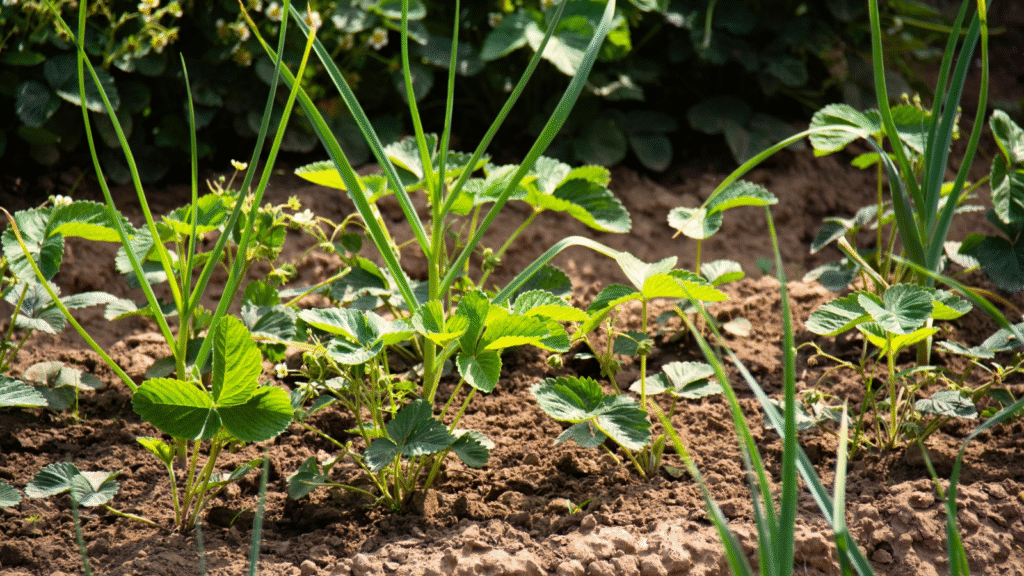
Follow these steps to develop a companion planting strategy tailored to your garden:
Step 1: Assess Your Garden Challenges
Before selecting companions, identify your specific garden needs:
- What pests consistently trouble your garden?
- Which plants have struggled in previous seasons?
- What areas have poor soil or drainage issues?
- Which crops are most important to your household?
Step 2: Map Your Available Space
Create a scale drawing of your garden space, noting:
- Areas with full sun, partial shade, and full shade
- Existing perennial plants and structures
- Soil quality variations across the garden
- Water sources and drainage patterns
Step 3: List Primary Crops
Create a prioritized list of the vegetables you definitely want to grow.
Step 4: Research Companion Relationships
For each primary crop, identify:
- 2-3 beneficial companions that address your garden challenges
- Any plants that should be kept separate
- Space and growing requirements for all selections
Step 5: Draft Your Garden Layout
Develop a planting plan that:
- Positions crops with their beneficial companions
- Keeps incompatible plants separated
- Accounts for plant heights and spacing needs
- Incorporates flowers throughout the garden, not just in borders
Step 6: Implement and Document Results
As you follow your plan:
- Take dated photos throughout the season
- Note pest problems, plant health, and harvest quantities
- Document particularly successful and unsuccessful pairings
- Use this information to refine next year’s companion planting plan
Advanced Companion Planting Techniques
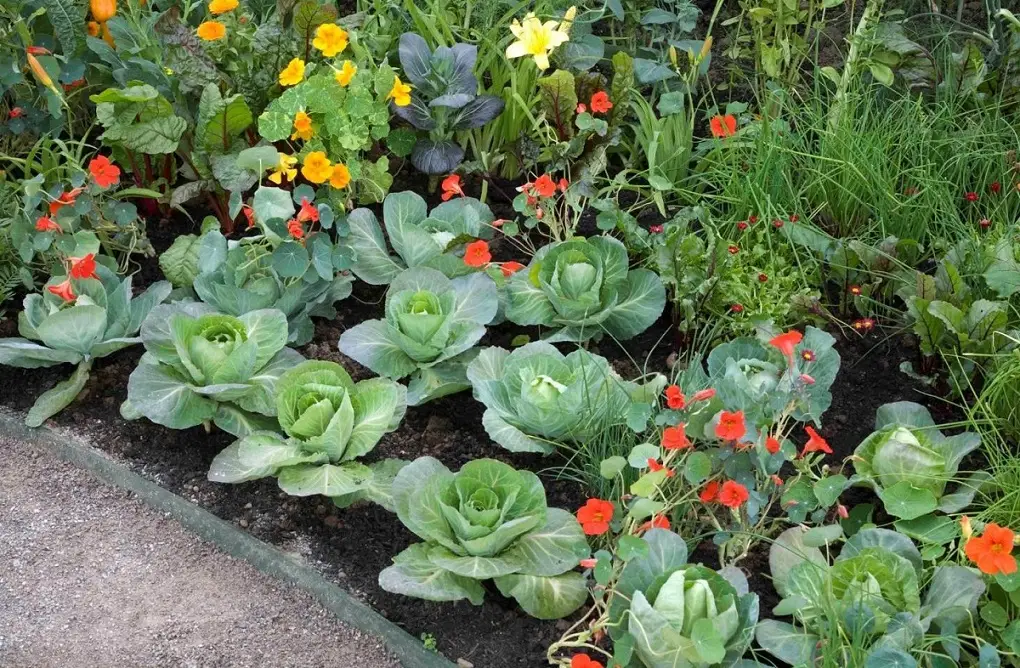
Once you’ve mastered basic partnerships, explore these sophisticated approaches:
Trap Cropping
Plant species that attract pests away from your main crops:
- Nasturtiums: Draw aphids away from vegetables
- Blue Hubbard Squash: Attracts cucumber beetles from main squash crops
- Radishes: Lure flea beetles from eggplant and brassicas
Nurse Cropping
Use temporary crops to improve conditions for slower-growing plants:
- Radishes sown with carrots mark rows and break soil crust before carrots germinate
- Oats planted in fall protect and nurture strawberry plants through winter
- Lettuce provides shade for heat-sensitive seedlings in summer months
Relay Planting
Plan succession partnerships where:
- Fast-growing crops mature and vacate space as slower companions expand
- Early crops fix nitrogen or improve soil structure for later plants
- One plant’s decline coincides with another’s prime growth period
Allelopathy Awareness
Some plants release compounds that inhibit growth of certain other plants—understanding these relationships is crucial:
- Fennel inhibits growth of many vegetables and should be isolated
- Black walnut trees produce juglone, toxic to tomatoes and other nightshades
- Sunflower residue can inhibit growth of some plants seeded after them
Common Companion Planting Mistakes to Avoid
Even experienced gardeners can fall into these companion planting pitfalls:
Overcrowding
Proper spacing remains essential:
- Companions still need adequate room for air circulation
- Competition for water and nutrients occurs even among friendly plants
- Allow for mature sizes when planning placements
Neglecting Plant Families
Remember that plants in the same family:
- Often suffer from the same diseases and pests
- Typically have similar soil and nutrient requirements
- May not be ideal companions for each other
Ignoring Timing Differences
Consider growth cycles when selecting companions:
- Fast-growing lettuce won’t effectively partner with slow-growing peppers
- Spring crops may be harvested before summer companions reach maturity
- Some beneficial relationships only matter during specific growth stages
Expecting Immediate Results
Some companion benefits develop over time:
- Soil improvements may take multiple seasons to fully manifest
- Beneficial insect populations build gradually
- Some perennial companions offer increasing benefits with maturity
Seasonal Companion Planting Strategies
Adapt your approach to capitalize on seasonal opportunities:
Spring
Focus on quick partnerships:
- Pair early peas with spinach and radishes
- Plant strawberries with borage to improve fruit set
- Interplant emerging perennial herbs with quick-growing lettuce
Summer
Emphasize heat-tolerant combinations:
- Position tall sunflowers to shade heat-sensitive greens
- Underplant tomatoes with basil for pest protection and flavor enhancement
- Use sweet alyssum as living mulch around summer squash
Fall
Utilize these late-season partnerships:
- Plant garlic around fruit trees to deter pests over winter
- Sow crimson clover between rows of fall brassicas
- Interplant fall carrots with winter scallions
Winter (For Mild Climates)
Winter gardens benefit from:
- Pairing winter kale with lingering calendula
- Planting fava beans to fix nitrogen around overwintered crops
- Using evergreen herbs as windbreaks for delicate winter greens
Project Showcase: Three Successful Companion Gardens
Urban Balcony Container Garden
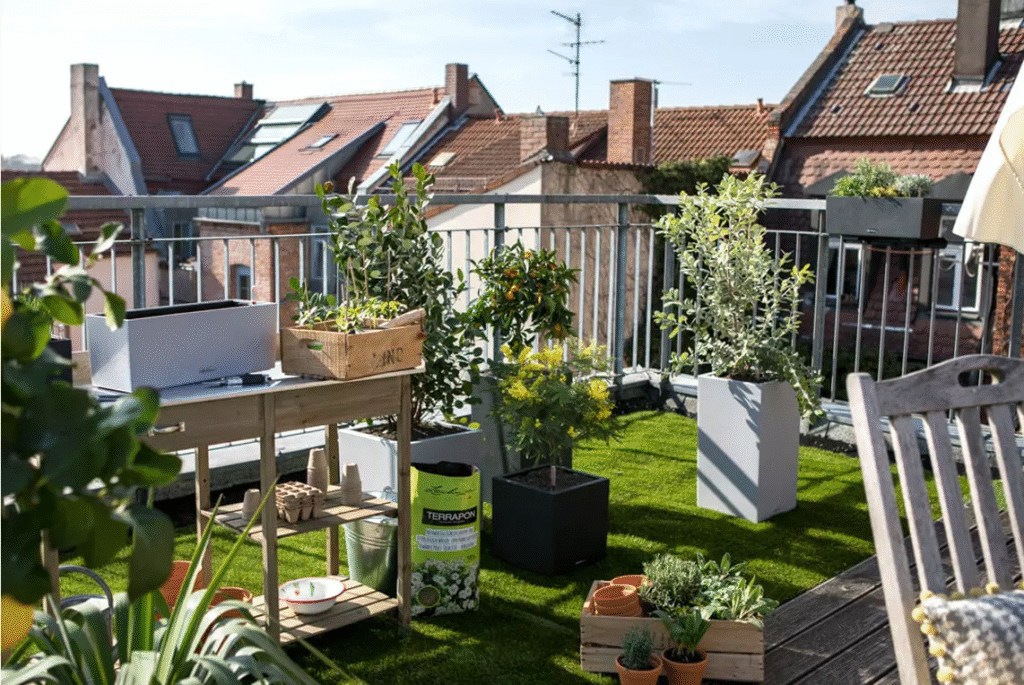
Conditions: Full sun, limited space, containers Strategy: Vertical combinations with multiple functions Key Companions:
- Tomatoes with basil and marigolds in 10-gallon containers
- Cucumber vines with nasturtiums in vertical planters
- Lettuce beneath partial shade of pepper plants Results: 30% more harvest in the same space as previous single-crop approach
Suburban Family Vegetable Plot

Conditions: Mixed sun/shade, clay soil, limited time for maintenance Strategy: Pest-deterrent focus with child-friendly elements Key Companions:
- Three Sisters planting (corn, beans, squash) as the garden centerpiece
- Calendula and zinnia borders to attract beneficial insects
- Herb guild integrating chives, sage, and thyme throughout vegetable beds Results: 75% reduction in pest problems and increased engagement from family members
Rural Market Garden

Conditions: Full sun, quarter-acre, focus on saleable crops Strategy: Maximize productivity and quality while minimizing inputs Key Companions:
- Pepper rows interplanted with basil and marigolds
- Rotational blocks combining nitrogen-fixing cover crops with heavy feeders
- Permanent hedgerows of pollinator-attracting perennials Results: Decreased fertilizer costs by 40%, premium pricing for exceptionally flavorful produce
Future Trends in Companion Planting
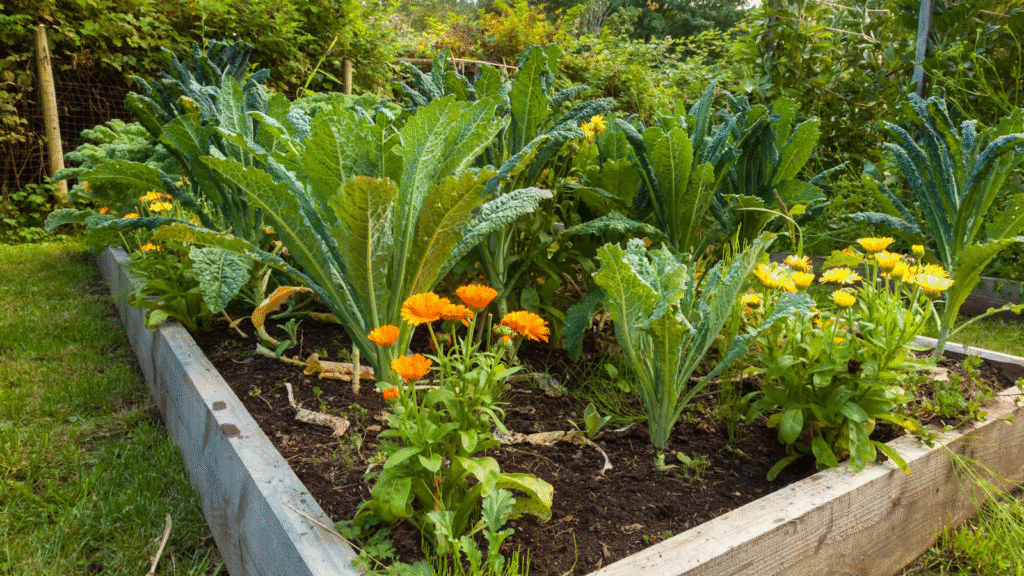
The age-old practice continues to evolve with new research and understanding:
Microbiome-Focused Partnerships
Emerging science reveals how plants communicate and share resources through soil fungi networks, suggesting future companion strategies might focus on:
- Selecting companions based on compatible mycorrhizal relationships
- Creating plant communities that foster beneficial soil biology
- Understanding how root exudates from one plant affect neighboring plants
Climate Adaptation Companions
As growing conditions change, look for:
- Heat-tolerant companions for traditionally cool-weather crops
- Drought-resistant support plants that improve moisture retention
- Partners that provide microclimate buffers against weather extremes
Indigenous Knowledge Integration
Traditional ecological knowledge offers untapped companion planting wisdom:
- Region-specific plant combinations developed over centuries
- Holistic growing systems that integrate with local ecosystems
- Cultural growing patterns that honor relationships between plants
Conclusion: Building a Garden Community
Companion planting transforms how we view our gardens—from collections of individual plants to interconnected communities where each member plays multiple roles. Like any community, a garden grows stronger through diversity, cooperation, and thoughtful planning.
By implementing the companion planting strategies outlined in this guide, you’ll cultivate not just better harvests, but a deeper understanding of the natural relationships that sustain all life. Your garden becomes a living laboratory where you can observe, learn from, and participate in these ancient plant partnerships.
As you experiment with companion planting, remember that your observations are valuable contributions to this evolving practice. Document your successes, share your discoveries, and remain open to the wisdom your plants reveal through their interactions. The most important garden relationship, after all, is between the gardener and the garden itself.
